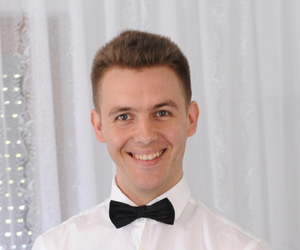This post was written by Miroslav Valan.
 Human impact on nature causes insects to die out and disappear at a faster pace than they can be studied. Any survey on biodiversity requires expertise, but those who may help with identifications - taxonomists - are always in shortage. Thanks to new technologies in computer vision and machine learning, which could automatically interpret objects captured in the images, and together with the members of the general public we could finally start making bigger steps towards saving our planet.
Human impact on nature causes insects to die out and disappear at a faster pace than they can be studied. Any survey on biodiversity requires expertise, but those who may help with identifications - taxonomists - are always in shortage. Thanks to new technologies in computer vision and machine learning, which could automatically interpret objects captured in the images, and together with the members of the general public we could finally start making bigger steps towards saving our planet.
In my thesis titled "Accelerating taxonomic research using image analyses and citizen science contribution", I firstly focused on a project aimed to provide a reliable of-the-shelf tool for taxon delimitation and/or taxon identification. This tool could be used by any expert or non-expert for taxa of interest, without the need for knowing underlying machine learning algorithms. This work is under review.
The knowledge I gained while working on aforementioned tool is widely applicable. That motivated me to take part in Datathon 2018 together with another BIG4 fellow Viktor Senderov, where we won the 1st place in computer vision and the 2nd overall on a task to build up an image recognition that reliably recognises which type of vegetable the customer has selected. Besides, I won the 3rd place on a challenge Fungi2018 from the workshop organized by Google and Microsoft, the FGVC5 (The Fifth Workshop on Fine-Grained Visual Categorization). Here, the goal was to build an automated taxon identification tool for nearly 1,500 wild mushrooms species, which have been spotted and photographed by the general public in Denmark.
The second part of my PhD is focused on citizen science. For this reason I initiated the Nyckelpigeforsoket2018 (Ladybird research 2018), which has two main goals (1) to educate the target group - school pupils - about AI and ladybirds and (2) to build a tool for automated identification of the ladybirds occuring in Sweden.

Over 15 000 pupils across Sweden and others interested to participate are contributing by taking pictures of one of our most popular insects - ladybirds. This project would not be possible without the help from Vetenskap & Allmänhet, Naturhistoriska riksmuseet, Entomological Society Stockholm and Savantic AB. The project is ongoing, so If you would like to contribute just download the Nyckelpigeforsoket2018 app, available for download in the App Store and on Google Play. You can also learn how to "catch a ladybird like a pro" from this short video done by Swedish National Television (in Swedish, starts at 1:04).
It has been pleasure to be part of such a great group such as BIG4 (actually, we students refer to it BIG4-ever). I was honored and excited from the moment I was chosen for the interview with one of the most cited scientists in the 21st century who eventually became my supervisor. The excitement never ended.
In the light of many positive outcomes, being a BIG4 fellow at Savantic AB is something that I appreciate the most. This enabled me to enter the field of machine learning during the exciting era (I knew nothing about it beforehand) and helped me to get a higher understanding of what is within reach with the technological advancements and what limitations should be surpassed to unlock new possibilities. This fellowship enabled me to develop a set of skills which made me feel ready for upcoming challenges and made me lose all the fears for ever being unemployed. In addition to conferences and symposia that allowed me to listen to, learn from, connect and discuss with prominent scientist, I am immensely indebted to all of those small, everyday scientific discussions with more than 20 PhD students that worked and mainly still work at Savantic (I am the only non-PhD at Savantic, but not for long *laugh*). I truly believe I could not benefit more from any other host.

